Himanshu Jindal
$T\bar{a}laGen:$ A System for Automatic $T\bar{a}la$ Identification and Generation
Jul 30, 2024Abstract:In Hindustani classical music, the tabla plays an important role as a rhythmic backbone and accompaniment. In applications like computer-based music analysis, learning singing, and learning musical instruments, tabla stroke transcription, $t\bar{a}la$ identification, and generation are crucial. This paper proposes a comprehensive system aimed at addressing these challenges. For tabla stroke transcription, we propose a novel approach based on model-agnostic meta-learning (MAML) that facilitates the accurate identification of tabla strokes using minimal data. Leveraging these transcriptions, the system introduces two novel $t\bar{a}la$ identification methods based on the sequence analysis of tabla strokes. \par Furthermore, the paper proposes a framework for $t\bar{a}la$ generation to bridge traditional and modern learning methods. This framework utilizes finite state transducers (FST) and linear time-invariant (LTI) filters to generate $t\bar{a}las$ with real-time tempo control through user interaction, enhancing practice sessions and musical education. Experimental evaluations on tabla solo and concert datasets demonstrate the system's exceptional performance on real-world data and its ability to outperform existing methods. Additionally, the proposed $t\bar{a}la$ identification methods surpass state-of-the-art techniques. The contributions of this paper include a combined approach to tabla stroke transcription, innovative $t\bar{a}la$ identification techniques, and a robust framework for $t\bar{a}la$ generation that handles the rhythmic complexities of Hindustani music.
Towards a Multimodal System for Precision Agriculture using IoT and Machine Learning
Jul 10, 2021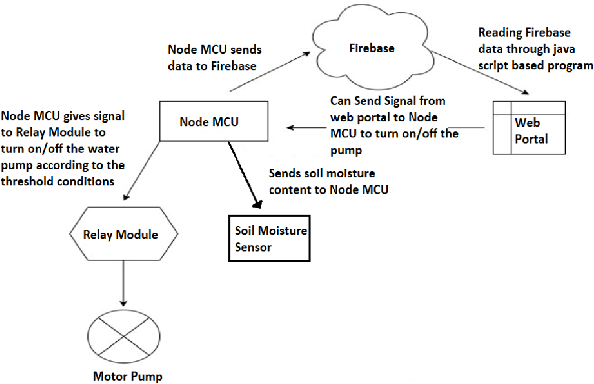
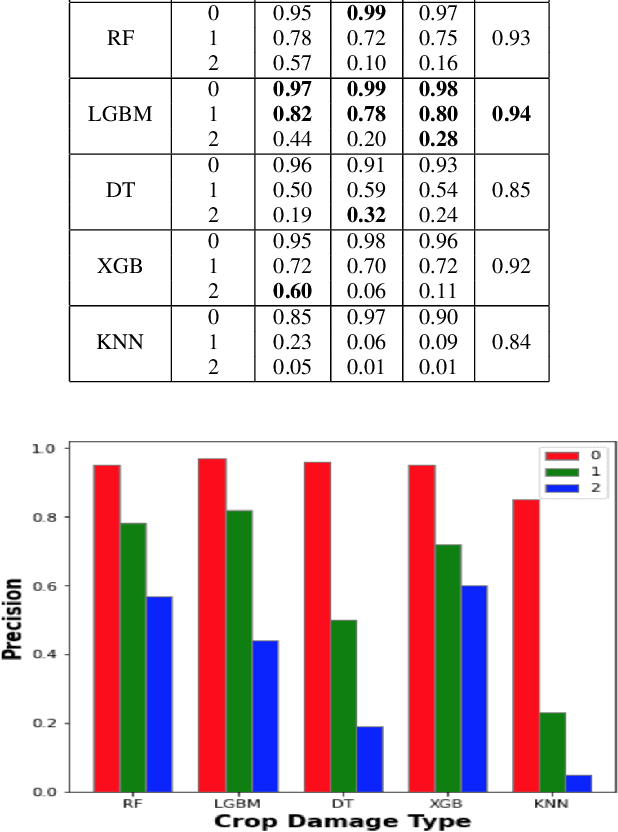

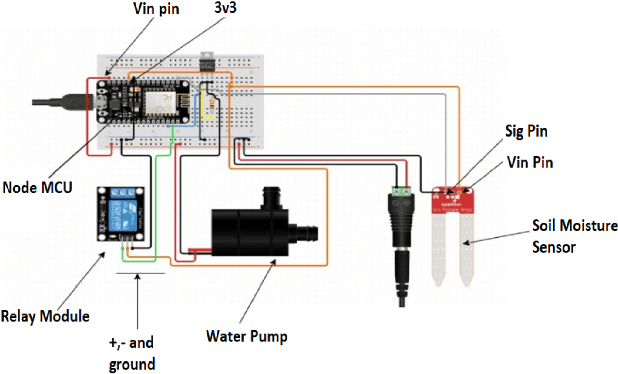
Abstract:Precision agriculture system is an arising idea that refers to overseeing farms utilizing current information and communication technologies to improve the quantity and quality of yields while advancing the human work required. The automation requires the assortment of information given by the sensors such as soil, water, light, humidity, temperature for additional information to furnish the operator with exact data to acquire excellent yield to farmers. In this work, a study is proposed that incorporates all common state-of-the-art approaches for precision agriculture use. Technologies like the Internet of Things (IoT) for data collection, machine Learning for crop damage prediction, and deep learning for crop disease detection is used. The data collection using IoT is responsible for the measure of moisture levels for smart irrigation, n, p, k estimations of fertilizers for best yield development. For crop damage prediction, various algorithms like Random Forest (RF), Light gradient boosting machine (LGBM), XGBoost (XGB), Decision Tree (DT) and K Nearest Neighbor (KNN) are used. Subsequently, Pre-Trained Convolutional Neural Network (CNN) models such as VGG16, Resnet50, and DenseNet121 are also trained to check if the crop was tainted with some illness or not.
Evaluation of Time Series Forecasting Models for Estimation of PM2.5 Levels in Air
Apr 07, 2021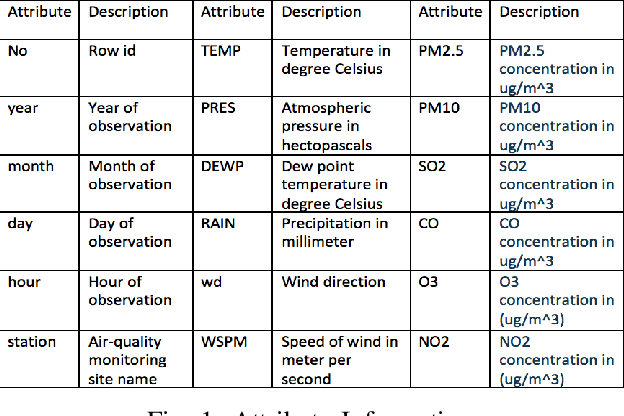
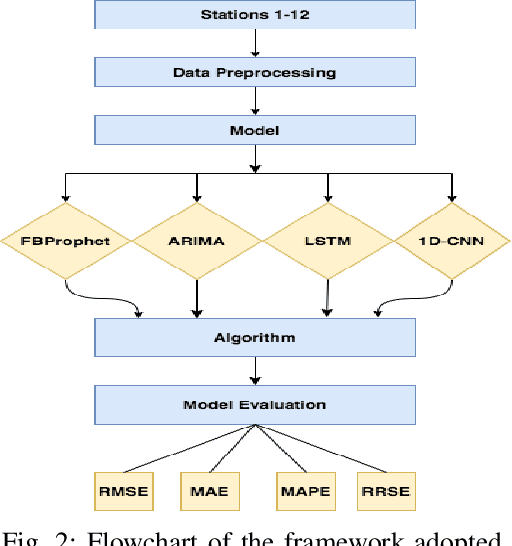
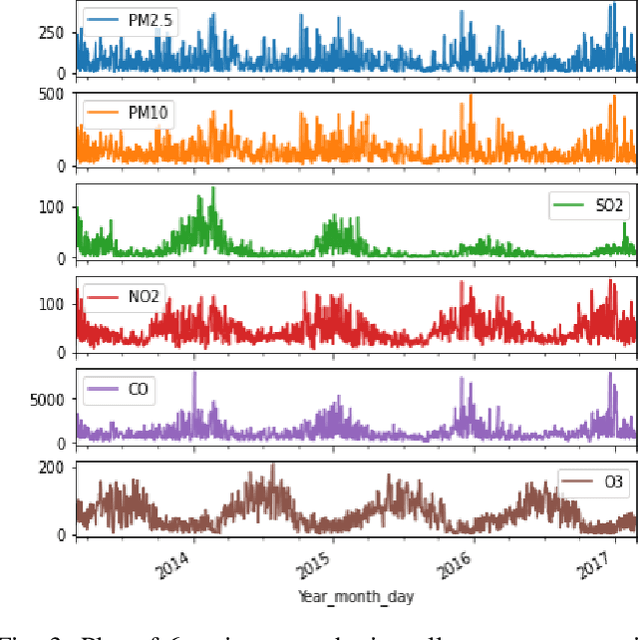
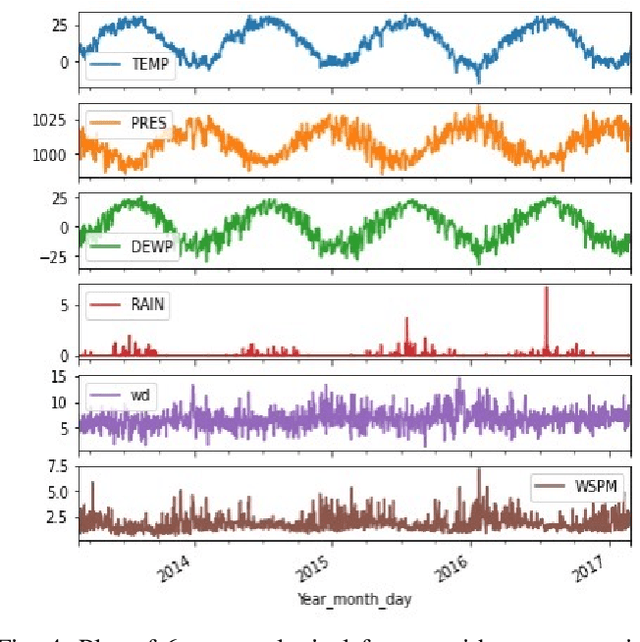
Abstract:Air contamination in urban areas has risen consistently over the past few years. Due to expanding industrialization and increasing concentration of toxic gases in the climate, the air is getting more poisonous step by step at an alarming rate. Since the arrival of the Coronavirus pandemic, it is getting more critical to lessen air contamination to reduce its impact. The specialists and environmentalists are making a valiant effort to gauge air contamination levels. However, its genuinely unpredictable to mimic subatomic communication in the air, which brings about off base outcomes. There has been an ascent in using machine learning and deep learning models to foresee the results on time series data. This study adopts ARIMA, FBProphet, and deep learning models such as LSTM, 1D CNN, to estimate the concentration of PM2.5 in the environment. Our predicted results convey that all adopted methods give comparative outcomes in terms of average root mean squared error. However, the LSTM outperforms all other models with reference to mean absolute percentage error.
 Add to Chrome
Add to Chrome Add to Firefox
Add to Firefox Add to Edge
Add to Edge